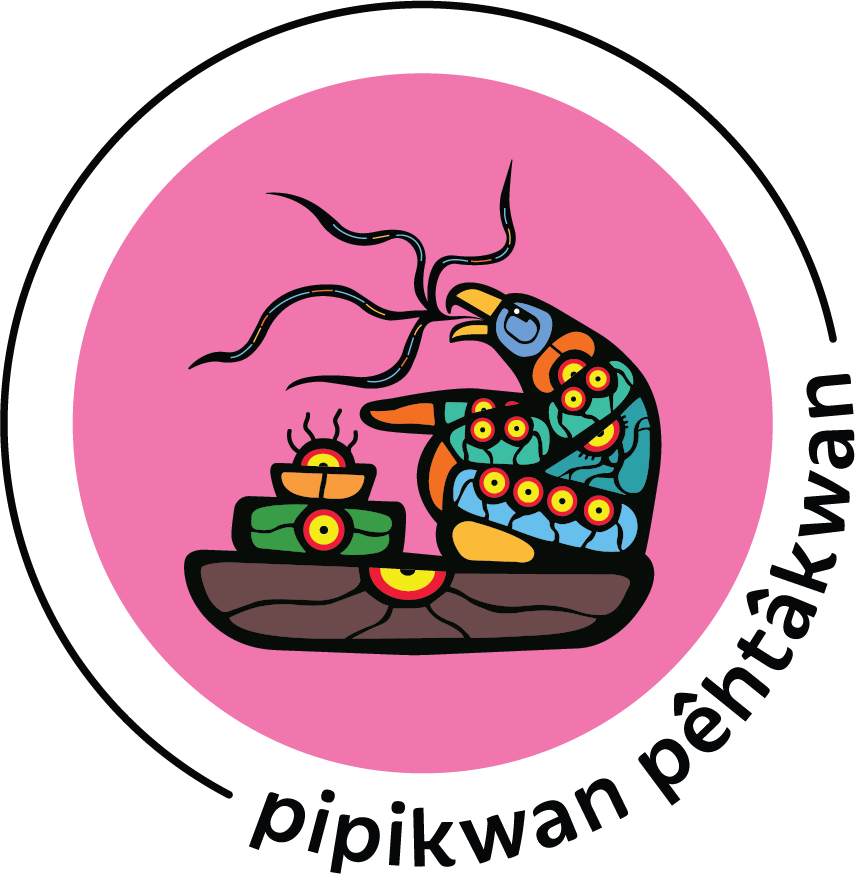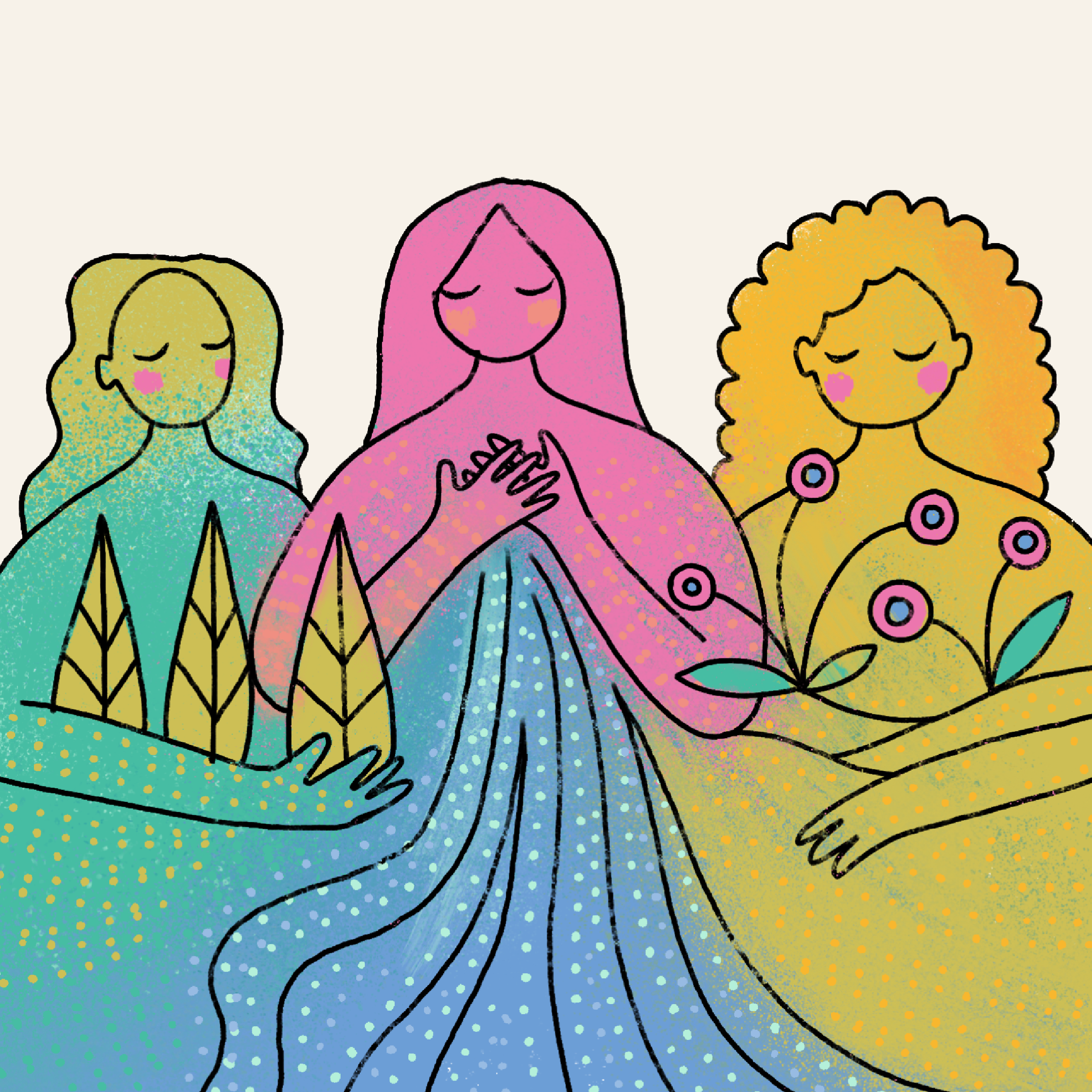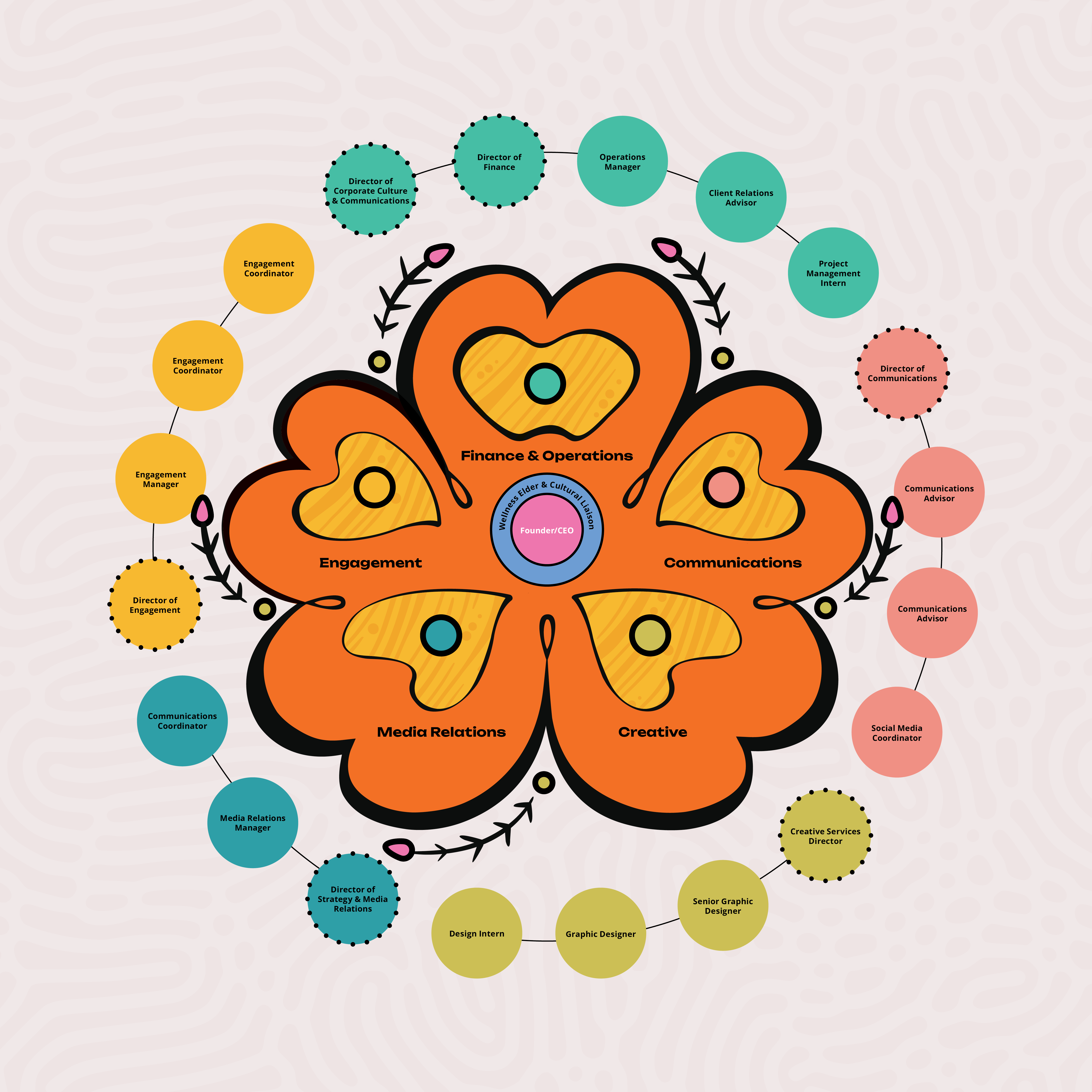Decolonization is about repatriation of Indigenous life and land. Decolonization is an anti-oppressive practice, not a metaphor. The use of Indigenous ways of knowing, being and doing repositions narratives, especially in settler-colonial states where there is no post-colonial state, but there is potential to affirm the existence and de-marginalize (Tuck & Yang, 2012).
Why should you think about decolonizing design and branding for your company or personal brand?
Your brand is an intangible concept that helps people identify a company, product, or individual through the visuals and narratives that you share about your work. When decolonization is part of your brand, you are actively participating in the undoing, unlearning, and dismantling of the colonial constructs that have oppressed and subjugated Indigenous Peoples for centuries. Decolonizing design and branding helps bring your personal and cultural identity into your work to better connect with and relate to your audience through shared experiences and values.
How can you include the practice of decolonization in your work?
Thinking about decolonization as a process that can be practised in a variety of ways makes it a little easier to implement. Decolonization is about thinking before you act and listening before you speak; it is about trusting your gut and building trust with your community; it is about sharing your story and being authentic in your intentions.
Graphic Designer, Melaina Goos, and Communications Advisor, Robyn Ferguson, share their journeys of decolonizing their practice while working at pipikwan pêhtâkwan. They each include some important considerations for your company’s practice of decolonization in design and branding.
Decolonizing Design
Melaina Goos
As a graphic designer at pipikwan pêhtâkwan, I am still in the process of learning ways I can decolonize design in my practice as a graphic designer, and I am not an expert by any means. This learning is a process and I will continue to question, learn and reflect. I believe decolonizing is a lifelong journey and our experiences and backgrounds provide us with opportunities to question our impact in the roles we take in life and how we can challenge the systems we interact within.
While the practice of decolonization may look different for everyone, I decolonize my design practice at pipikwan pêhtâkwan to better connect with the client and the community, as well as my culture and education by including these five considerations in every design project.
- Tell a story through designs
- Listen to understand
- Design in a meaningful way
- Question Eurocentric design rules and teachings
- Include community and Elders in the design process
Tell a story: Tell a story through the visuals – through the use of colour, symbolism and imagery. Respect what aspects you keep to yourself and your community, and what you decide to share openly with others. It is important to centre experiences, and bring culture and identity into everything you do.
Listen to understand: Have meaningful communication with your client. Visit and have conversations to understand who they are and what they are hoping to achieve. Sometimes this can be obvious to designers, but it is important to build a relationship with your client and have a meaningful connection. This way both the designer and client feel comfortable to share and clarify when needed.
Design in a meaningful way: Design in a way that considers your client, their goals, purpose (mission/vision/values) and interactions. Design with the purpose of true meaning and connection for the client – really understand barriers, challenges and ways you can improve these interactions in the systems we live in whether it is a graphic, logo or environment.
Question design rules: Challenge Eurocentric teachings and views. Unlearn. Include Indigenous worldviews, knowledge, symbolism and meaning in designs.
Include community: Include the community in designs. This includes direction and feedback. Visit with the community to understand and collaborate in different phases of the design process. Listen, understand and work as a collective – listening to all voices.
“Decolonizing is a process and a process in design as well. It’s a journey of curiosity, asking questions, reflecting, re-learning and evolving. Every design has an audience and affects people. It is important to visit and listen to all voices. And to think of how the small changes and ways we design from a decolonized lens can make a change.” – Melaina Goos
Decolonizing Branding
Robyn Ferguson
As a Communications Advisor at pipikwan pêhtâkwan, my job is to help clients share their stories in ways that are valuable and authentic to their brand and their personal identity. Inclusive of design, branding also uses a narrative to help your audience understand what your company does, why it exists, and how your product or service can benefit them, and to build brand loyalty through relatability and shared values. Decolonizing as a practice can help you uncover and determine the part of your story that is most important to tell in building a brand that resonates with you and your audience.
I decolonize my communications practice at pipikwan pêhtâkwan to support my personal and professional journey to reconnecting with my culture, and to help clients tell their stories in ways that benefit their work, communities, histories, and cultures by including these five considerations in every project:
- Use your teachings to guide your decision-making
- Tell your story about what brought you to create your company
- Be vulnerable and authentic, but be intentional about what you share
- Trust your gut, it’ll tell you what is right
- Foster your relationships with your community and Elders, and give as much as you take
Use your teachings: Let your teachings guide how you operate and make decisions. The stories and traditions you’ve collected throughout your lifetime are valuable to your personal and professional development. The teachings you’ve learned are part of your story — use them to help demonstrate your purpose. Be mindful of what and how much you share – what is comfortable and what is not.
Tell your story: Who you are and what events led you to this point? How did your organization come to be? Your story helps to better understand why your company exists and what is important to you. Connecting your work with your personal values, principles and behaviours aligns your story with your vision and mission.
Be vulnerable and authentic: People connect best with other people rather than entities. Connecting with your audience is a personal endeavour that is most successful when you can open up and give people something to relate to. Everyone wants to belong and be part of something — being authentic helps but remember to be intentional about what and how much you share. Your words, actions and attitudes help express your voice, tone and personality.
Trust your gut: Your gut knows what is right. Do a gut check before going into situations to make sure it feels good. It is valuable to say no sometimes, to keep some things to yourself, and to walk away if a situation doesn’t feel right. Some things are meant to be gatekept – for you, your culture, your community.
Foster relationships with community and Elders: Give back as much as you take from your community by building meaningful and reciprocal relationships with community members and Elders. Ask questions, share answers and provide appropriate protocol (tobacco, etc) to create collaborative and healthy relationships for working together. You will find opportunities are created and innovative solutions are found which bring value and new perspectives to the table.
“To me, decolonization means reconsidering and restructuring many of the methods I learned in university, finding different words to express and identify myself, bringing more of my culture into my decision-making and worldview, and focussing more on the collective rather than the individual.” – Robyn Ferguson
Tuck, E. & Yang, K. (2012). “Decolonization is not a Metaphor.”POC Online Classroom.
Retrieved from http://www.poconlineclassroom.com/blog/2017/2/17/rad-reading-decolonization-is-not-a-metaphor




